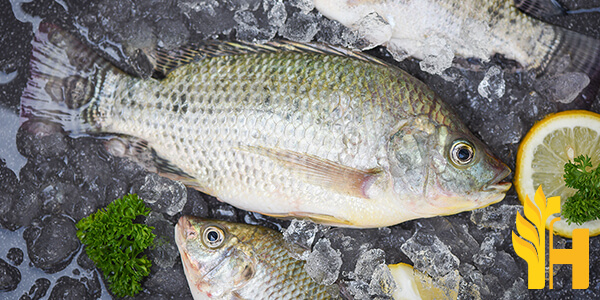Tilapia price

Where to buy and sell Tilapia, lowest (cheapest) and highest price.
check offers buy sell TilapiaToday price for TilapiaTilapia wholesale prices 2022
The Current commodity price of Tilapia per kg, pound in the world in the global markets
tilapia live catty
Price range: 10 - 10 CNY / 0,60 kg | Market: suzhou nanhuan bridge market | Date: 2025-12-04
tilapia live catty
Price range: 10 - 10 CNY / 0,60 kg | Market: suzhou nanhuan bridge market | Date: 2025-12-01
tilapia live catty
Price range: 9 - 10 CNY / 0,60 kg | Market: suzhou nanhuan bridge market | Date: 2025-11-27
tilapia live catty
Price range: 9 - 10 CNY / 0,60 kg | Market: suzhou nanhuan bridge market | Date: 2025-11-24
tilapia live catty
Price range: 9 - 10 CNY / 0,60 kg | Market: suzhou nanhuan bridge market | Date: 2025-11-20
tilapia live catty
Price range: 9 - 10 CNY / 0,60 kg | Market: suzhou nanhuan bridge market | Date: 2025-11-17
tilapia live catty
Price range: 9 - 10 CNY / 0,60 kg | Market: suzhou nanhuan bridge market | Date: 2025-11-13
tilapia live catty
Price range: 9 - 10 CNY / 0,60 kg | Market: suzhou nanhuan bridge market | Date: 2025-11-10
tilapia live catty
Price range: 9 - 10 CNY / 0,60 kg | Market: suzhou nanhuan bridge market | Date: 2025-11-06
Tilapia
Tilapia is a hardy, fast-growing fish, that can live up to ten years and reach ten pounds in weight. Tilapia are shaped like sunfish or crappie and are easily identifiable by the interrupted lateral line characteristic of the Chiclid family of fishes. As well as being extremely easy to breed, tilapia is also very tolerant of overcrowding. These traits make tilapia an excellent candidate for aquaculture, which has led to them becoming one of the most farmed fish in the world. Around 2.5 million tons of tilapia are produced every year, accounting for around 50% of all cultured fish! However, with this increased production, has come several problems, such as the spread of disease and genetic defects. Tilapia is very tolerant of overcrowding. There are some major issues with tilapia as a food source; firstly, there is evidence that overfishing is occurring. Also, farming these fish can bring about problems. For example, tilapia feed on genetically modified (GM) soybeans and corn which contains pesticides and herbicides like glyphosate and atrazine that end up in the fish's system. This is bad news for us because studies have linked glyphosate to cancer, Alzheimer's disease, Parkinson's disease, and autism! It has also been shown to affect the liver, kidneys, and even the microbiome! The problem with tilapia is that it contains very little omega-3 fatty acids. This means that eating too much tilapia can cause numerous health issues. Tilapia also has a high level of omega-6 acids which contribute to inflammation in the body, while the lack of omega-3 acids leads to increased inflammation. The biggest problem is that tilapia contains about four times more of this inflammatory acid than wild salmon which contains the most! The fish is also an endocrine disrupter, which means that it contains a chemical that interferes with our hormone function. This can lead to cancers and birth defects. If you're going to eat fish, the best option is wild Alaskan salmon or trout because they are high in unsaturated fatty acids. Another good choice is herring which is high in omega-3 acids and vitamin D. Articles that discuss the environmental benefits of eating tilapia include Tilapia Fish Farming - Tilapia as a Food Source. Additional details can be found by searching for any of the following terms: "tilapia", "Tilapia, food source", "tilapia farming" or "Tilapia aquaculture".Global tilapia production
Tilapia is one of the most popular fish in the world. It is also one of the most farmed fish. In 2016, the global production of tilapia was 7.6 million tonnes. China is the largest producer of tilapia, followed by Egypt and Indonesia. Tilapia is a versatile fish that can be cooked in many different ways. It is often considered a healthy food choice because it is low in saturated fat and calories. Tilapia is also a good source of protein, potassium, and vitamins B12 and D. Despite its popularity, tilapia has been criticized in recent years for its potential negative impact on the environment and human health. Some of the concerns raised about tilapia farming include water pollution, the use of antibiotics and other chemicals, and the destruction of natural habitats. Despite these concerns, tilapia remains a popular fish for both commercial and home consumption. If you are considering adding tilapia to your diet, be sure to research the potential risks and benefits to make an informed decision.Download our new
Husfarm App
Stay up to date with the current prieces of agricultural products all over the world.
Do you want to sell agricultural products?
Are you an Agricultural processor looking for high-quality products to buy?
Post an ad for FREE!
